Camera Search vs Visual Interface
by Jess Erdman, Content Marketing LeadJuly 2023

Visual Search in AI has caught the attention of everyone from Kim Kardashian to Amazon, and it’s taking the fashion world by storm. In an attempt to alleviate the fashion industry from burdensome fashion taxonomies, retailers are looking to tools where customers can search clothes by image to resolve the tedious discovery journey customers are forced to endure when shopping online.
Powered by fashion artificial intelligence, search clothes by image is an alternative to text-based search tools, which may end up providing inaccurate results depending on customer intent.
However, it can be difficult to find a common language between retailers and customers. For example, when a customer uploads a photo of a pink maxi dress, is she looking for a specific feature? Which is more important--the color or the cut of the dress?
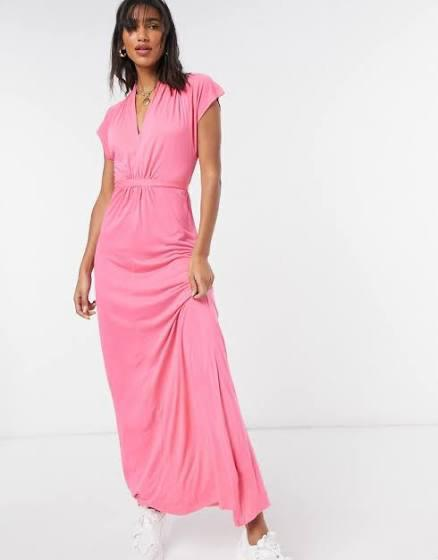
In this picture, there are many different product attributes a customer may be looking for: short-sleeves, v-neck, dress length, a cinched waist, color...and the list goes on.
In addition, factors outside of the customers control, such as image quality and quality of the search by image algorithm can also affect search results.
However, there are ways to overcome these setbacks, depending on the type of visual search.
Visual search is defined as looking for a product by using a photo or other visual search tool, such as an illustration. It’s an alternative to searching for a product with text keywords.
Visual Search in AI can be divided into two different categories:
1-Camera search
2-Visual attribute search
You are likely familiar with camera (or reverse image) search in some aspects, but we’ll go deeper to explain the pros and cons of camera search--and compare it to new search clothes by image methods.
When we talk about visual search in AI, you’ll likely think of camera search, which can be found at major retailers such as ASOS and H&M.
And, it’s easy--all you need to do is upload an image that you’re looking for, and artificial intelligence will find matching products, similar to the image uploaded.
Then, you’ll need to filter for other fashion attributes you may be looking for, such as fit and length.
Let’s see an example. We used the pink maxi dress from above to search clothes by image, using the ASOS mobile app:
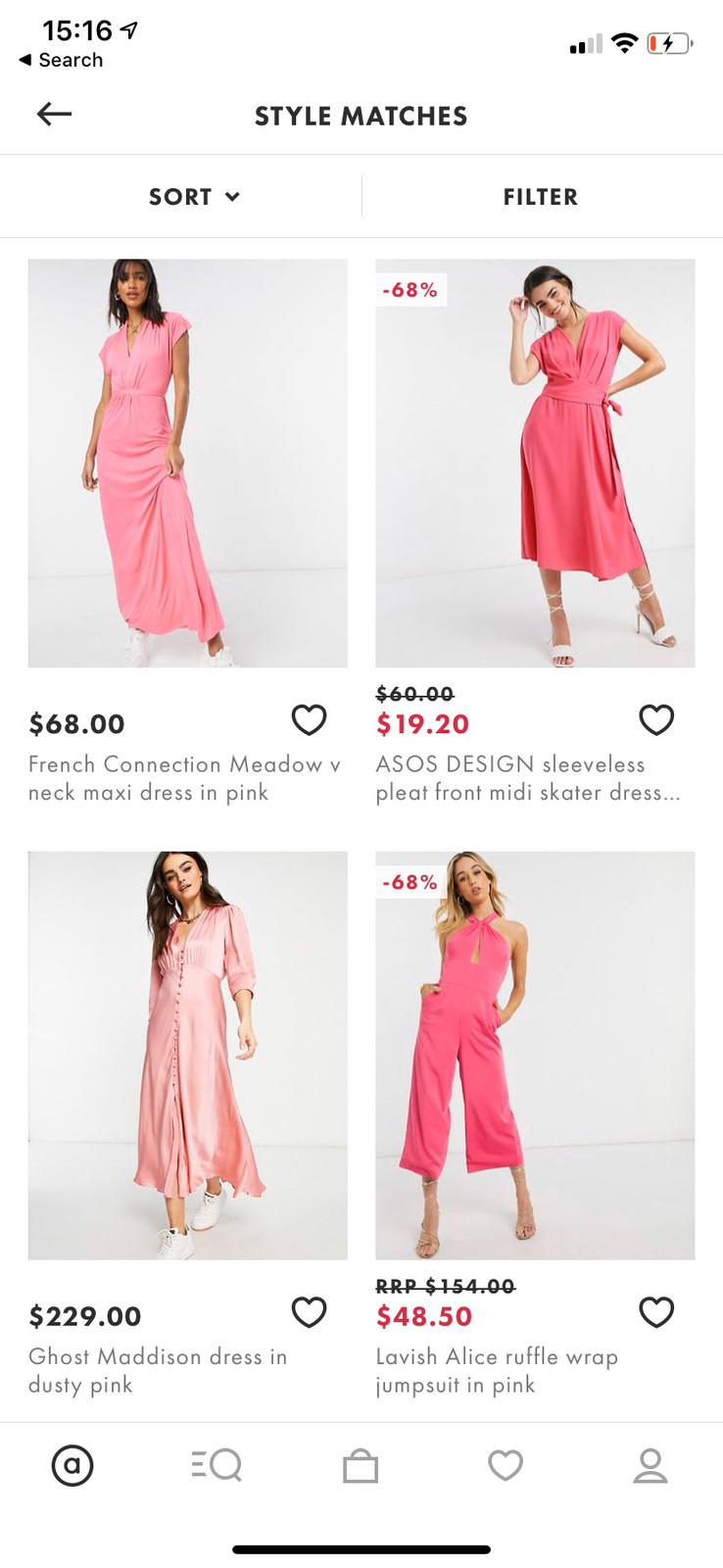
As you can see, the H&M camera tool focused on a few specific attributes: pleats, shirt length, and dress length--very different from the Asos results.
Not all algorithms are created equal--especially when searching by image uploads.
Areas for Improvement:
Niche items: While it’s easy for artificial intelligence to identify fashion categories such as a “maxi-dress” or “dress,” image upload algorithms can struggle to find niche items and styles. In the example above, it’s unclear which fashion attributes are most important to the customer--and therefore, the results are a jumble of dresses.
Background noise: Depending on the quality of the photo, background noise can distract from relevant search results.
Creating a seamless customer journey: Image upload asks customers to exit a mobile app (or webpage) to upload a photo from their phone gallery. As eCommerce websites strive to create a seamless customer journey, asking customers to completely exit and return to an app can create a rocky customer journey, as customers may drop off once they exit the app.
An emerging form of visual search in AI is visual interface search. This means that customers can select the type of fashion attributes they’re looking for on a mannequin or illustration--attributes that image upload search might miss.
Visual interface search puts the customer in charge of the search, as she can continually filter to find what she’s looking for. In addition, the customer can customize any part of the style she wants--for example, a maxi dress with short sleeves.
Let’s take the same example of the short-sleeve pink maxi dress, using YesPlz AI’s Virtual Mannequin Filter:
First, the customer selects the most important fashion attributes--type of neckline, waist, dress length, and sleeve length.
Then, the customer can filter based on color, pattern or no pattern, and price. We’ll filter based on solid as per the image. And finally, fashion artificial intelligence retrieves the search results:
(Try the live demo at https://poc.yesplz.ai/demo)
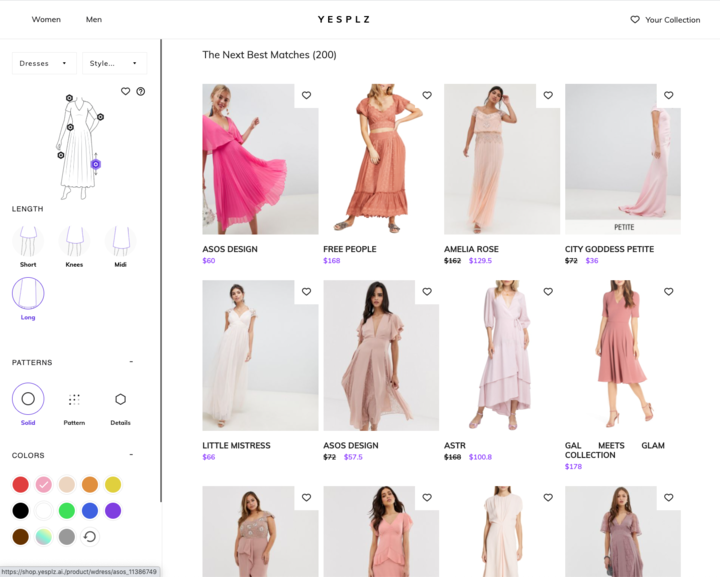
(Visit the website at https://us.wconcept.com/)
The most important attributes to the customer, such as neckline and sleeve-length are shown.
To learn more about the YesPlz Virtual Mannequin Filter, check out our exclusive Unboxing Video here.
Areas for Improvement:
At YesPlz AI, we strive to always improve our product to fit the needs of retailers. If you have an idea or suggestion, please let us know and we can talk about it!
Here’s a side-by-side comparison of visual search options:
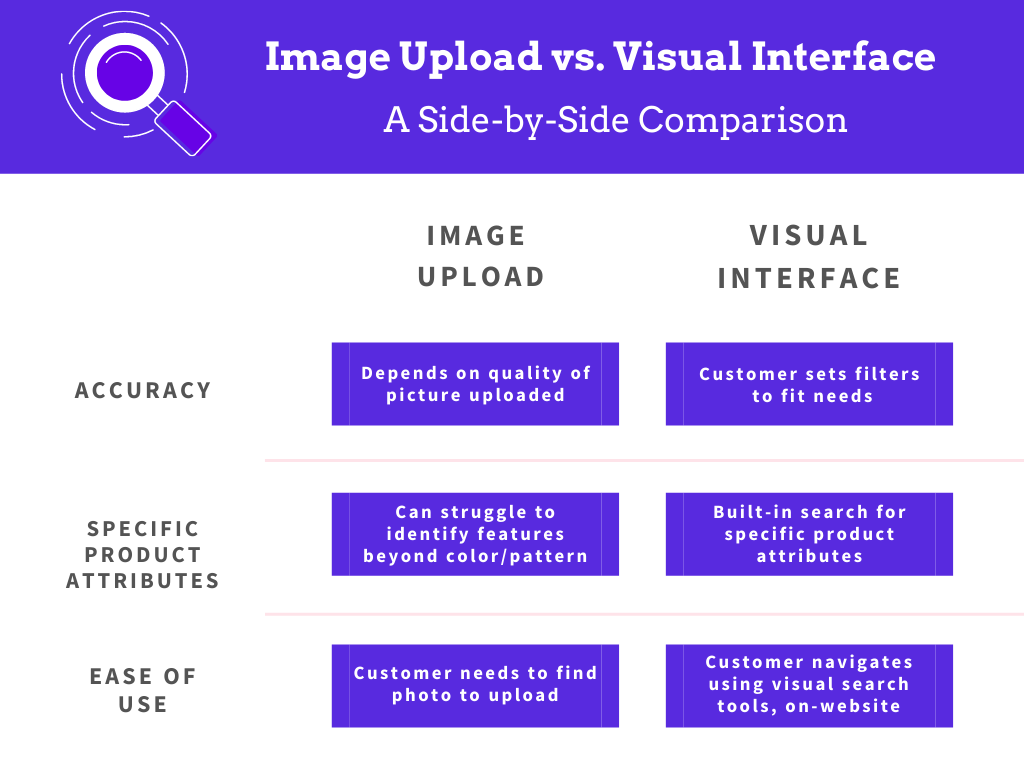
As retailers continue to focus on the customer search journey, it’s likely that they’ll begin to integrate visual interface and image upload search into eCommerce. The differences between visual interface and image upload search are prominent--depending on the goals of the customer.
For customers looking to find specific fashion attributes and easily navigate search, visual interface offers a more robust search experience. And, for customers looking to find an item based on a real-life picture, image upload offers search options.
The future is leaning towards visual search in AI that uses a creative visual interface to guide customers through the search and discovery process. The technology around visual interface is rapidly evolving--are you in the know about it?
Written by Jess Erdman
Content Marketing Lead
I'm passionate about creating cool content. The best part? I get to learn new things about fashion tech and ecommerce everyday. Have an idea or opinion about this article? Reach out at jess@yesplz.ai
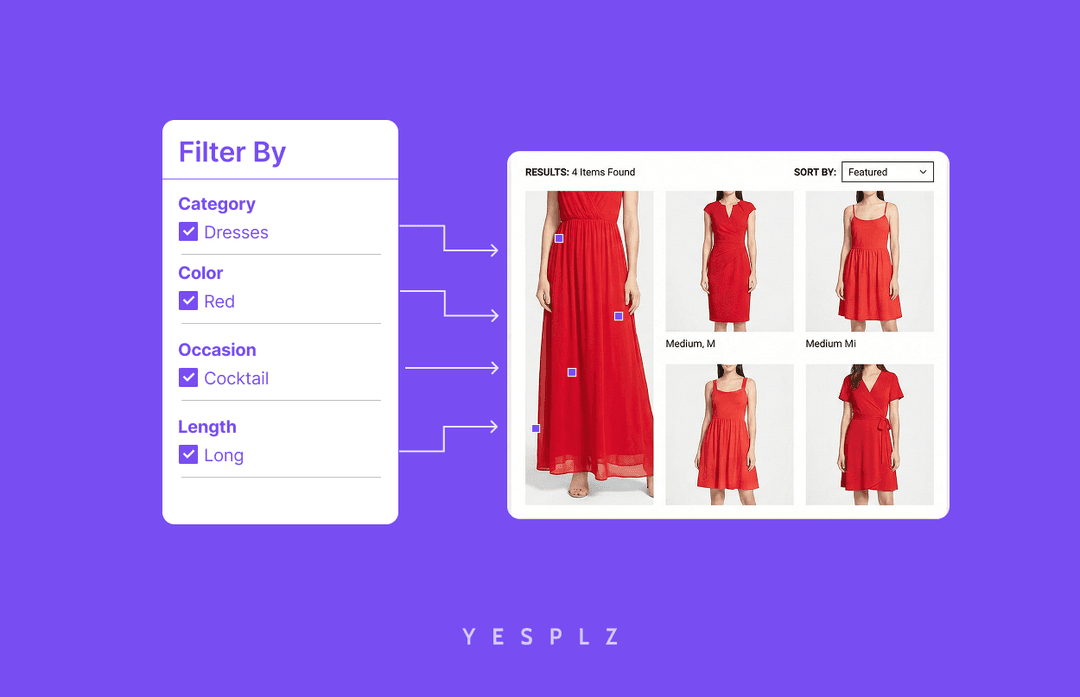
Stop losing sales to poor product filtering. Discover how AI simplifies creating Shopify filters, saving you 25-50 hours per 100 products.
by YesPlz.AI
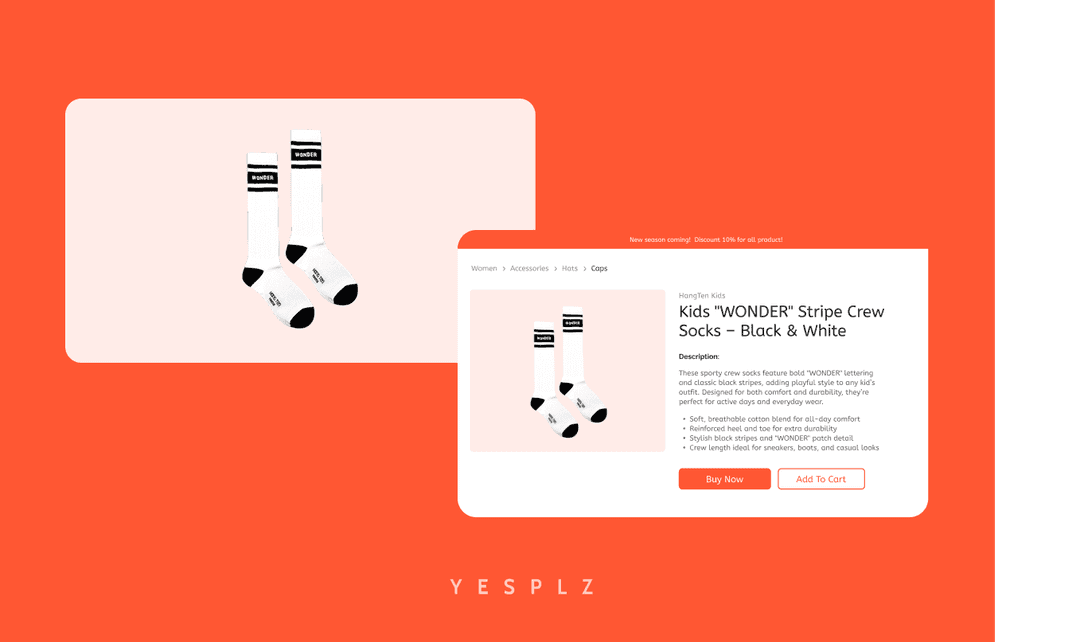
Automate Shopify product pages and cut 50–100 hours of manual work. AI generates product titles, descriptions, and metadata instantly from product images.
by YesPlz.AI